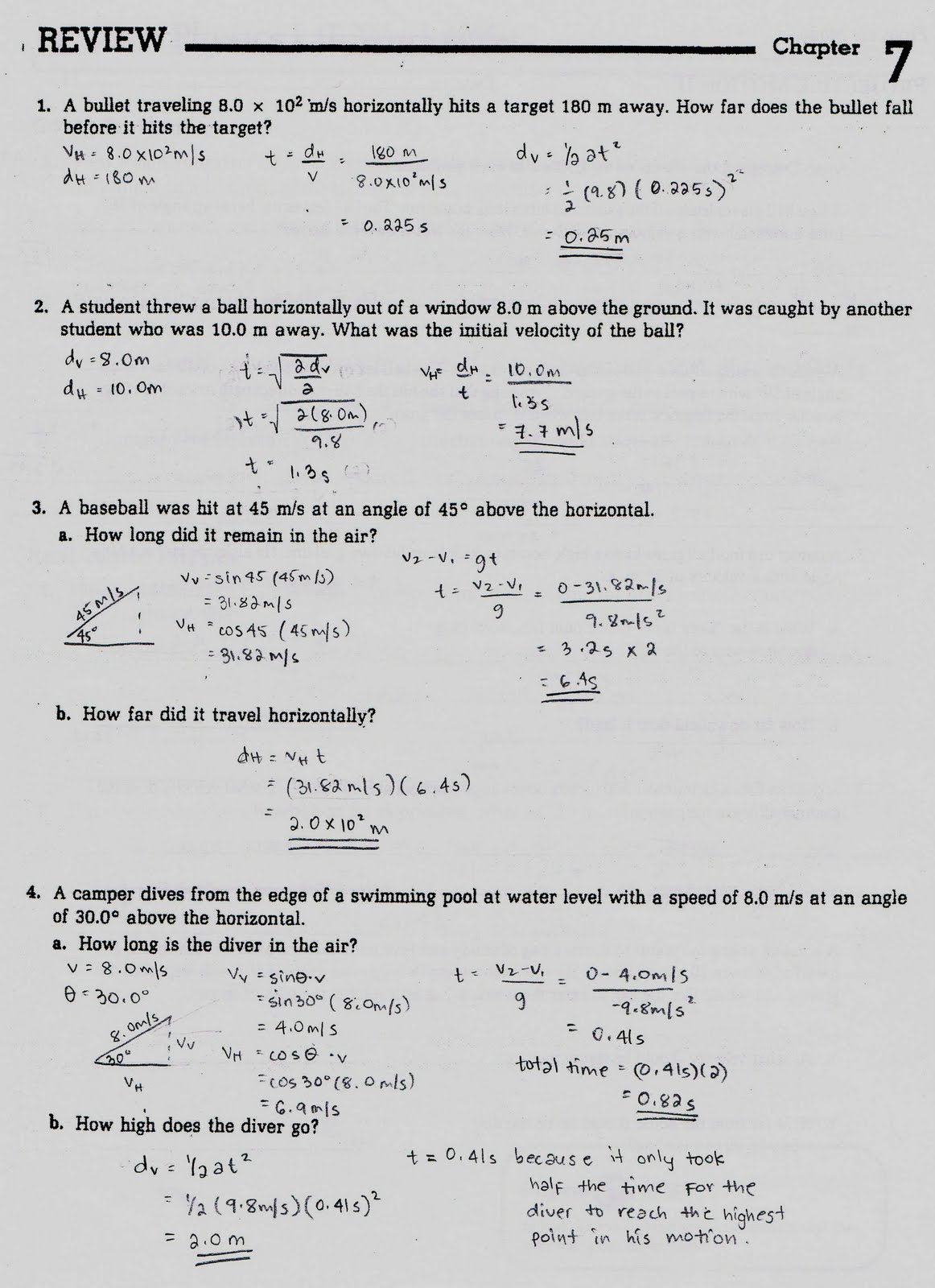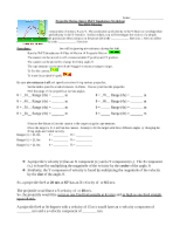

The ball is lobbed to a teammate at 8 m/s at an angle of 40°. A basketball is held over head at a height of 2.4 m. A ship fires its guns with a speed of 400 m/s at an angle of 35° with the horizontal. This choice of axes is the most sensible, because acceleration due to gravity is vertical-thus, there will be no acceleration along the horizontal axis when air resistance is negligible. It takes 7.0 seconds to hit the ground, find: a) height of the cliff. The key to analyzing two-dimensional projectile motion is to break it into two motions, one along the horizontal axis and the other along the vertical. This fact was discussed in Kinematics in Two Dimensions: An Introduction, where vertical and horizontal motions were seen to be independent. The most important fact to remember here is that motions along perpendicular axes are independent and thus can be analyzed separately. In this section, we consider two-dimensional projectile motion, such as that of a football or other object for which air resistance is negligible. Force And Motion Worksheet Answers Education. You can use the same equations from the previous unit to solve projectile motion problems keeping in mind horizontal motion is independent of vertical motion.

The motion of falling objects, as covered in Problem-Solving Basics for One-Dimensional Kinematics, is a simple one-dimensional type of projectile motion in which there is no horizontal movement. Force And Motion Worksheet Answers Education Template, Projectile Motion Phet Simulation Lab Answer Sheet. You found that a projectile moves with constant velocity in the horizontal direction and constant acceleration in the vertical direction (a y -9.8 m/s 2). The object is called a projectile, and its path is called its trajectory.

Projectile motion is the motion of an object thrown or projected into the air, subject to only the acceleration of gravity.


 0 kommentar(er)
0 kommentar(er)
